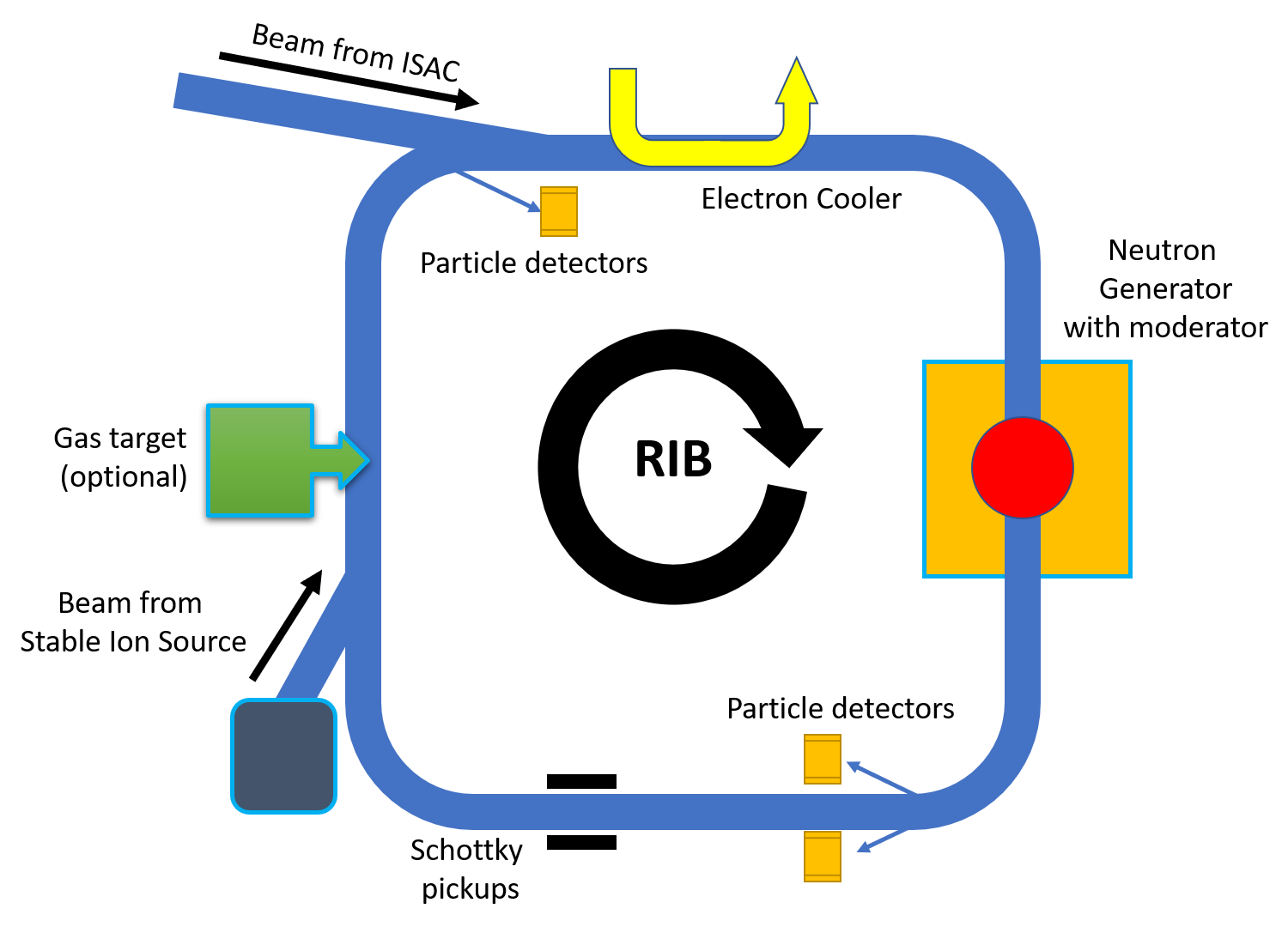The Exotic Decay Spectroscopy Group investigates decay modes that occur in very neutron-rich nuclei and in highly-charged ions with only a few electrons. Our research aims at a better understanding how elements heavier than iron are produced in the rapid neutron capture process in explosive stellar environments, as well as how stellar conditions influence various decay processes.
The two experimental setups that are presently used for our research are located at RIKEN Nishina Center in Wako, Japan and at the Experimental Storage Ring at the GSI Helmholtz Center for Heavy Ion Research in Darmstadt, Germany.
In Japan, the BRIKEN (Beta-delayed neutrons at RIKEN) collaboration operates the worlds’ most efficient neutron detector array to measure half-lives and neutron-branching ratios of very short-lived nuclei at the border of the chart of nuclides. In Germany, the ILIMA (Isomers, Lifetimes, and Masses) collaboration operates several detectors in the existing storage ring at GSI and is building new devices for operation at the new radioactive-beam facility FAIR.
On our home turf at TRIUMF the group is collaborating with the Accelerator Division on a feasibility study to couple a low-energy storage ring (TRISR) with a neutron generator to our existing ISAC radioactive beam facility. This worldwide unique facility would allow for the first time to perform direct measurements of neutron capture cross sections on short-lived isotopes.

